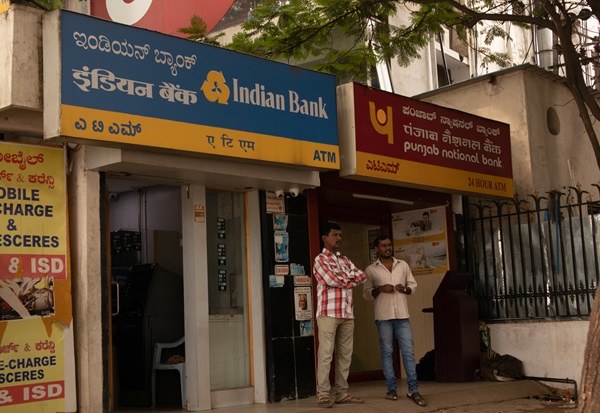.png)

By R. Gurumurthy
Gurumurthy, ex-central banker and a Wharton alum, managed the rupee and forex reserves, government debt and played a key role in drafting India's Financial Stability Reports.
September 12, 2025 at 6:05 AM IST
The government’s latest flirtation, going by some media reports, with creating three to four “globally competitive” state-run banks through further consolidation rests on a beguiling fallacy. Size, it assumes, is synonymous with strength. Yet India’s own history demonstrates otherwise. Size has never been a substitute for governance, innovation, or autonomy.
If sheer heft were enough, the State Bank of India would already be in the league of JPMorgan, HSBC, or DBS. With a balance sheet that ranks among the world’s top fifty, SBI is a domestic behemoth. Yet, outside India, it is a marginal player, with its profitability, technology stack, and governance standards far behind those of its global peers. Scale without liberation has translated into little more than bigness without brilliance.
This misplaced belief in size is not unique to Indian banking. It echoes the trajectory of India’s largest IT services companies: Infosys, TCS, Wipro. They built impressive global footprints but never became true global technology giants. Instead, they thrived as outsourcing powerhouses, reliable but unremarkable, avoiding the higher rungs of innovation occupied by Microsoft, Amazon, or Tencent. Indian IT became globally present but not globally powerful. Indian banking risks repeating the same pattern, size without substance, presence without power.
Governance, Not Girth
Indian PSBs remain caught in the governance trap. Boards exist on paper, but real decisions are shaped by other considerations and “national interest” diktats. Senior appointments are chosen by the Finance Ministry, not boards. Lending priorities follow political cycles. Even a private company promoter with 70% ownership might not wield such informal sway. In PSBs, the government could bypass even its own board nominees, reducing governance to a ritual.
The parallel with IT is striking. The boards of Infosys or TCS may project independence, but their business models rarely stray beyond the comfort zone of labour arbitrage. They have the cash flows to innovate but little incentive, because their governance structure is conditioned to reward predictability, not risk-taking. Banks and IT firms alike are constrained not by lack of resources but by systemic aversion to true independence. Both sectors reveal the same paradox: risk is not in daring too much, but in daring too little and risking irrelevance in the global hierarchy.
India’s financial history is littered with examples of governance failures disguised by scale. A $2 billion fraud at Punjab National Bank exposed breathtaking lapses in controls. This was no small provincial lender but one of the “mega banks” from earlier consolidation. Size offered no immunity. Nicknamed the “bad bank,” the United Bank of India was staring into a deep crisis with its bad loans at more than 10% and contaminated loans at 20% (without rescheduling), allegedly due to political interference that crippled recovery. It was later merged into PNB, burying one crisis inside another. Then there was the case of Infrastructure Lending & Financial Services: heavily funded by PSBs, it collapsed under unsustainable debt. Banks had lent freely to politically-favoured projects while private lenders stayed cautious (Yes Bank is an exception, though).
Each episode illustrates the same truth. It is not a lack of scale but a lack of governance and autonomy that undermines Indian PSBs.
Cosmetic Surgery
The reality was more sobering. Integration devoured management bandwidth. Cultural mismatches slowed decision-making. Legacy IT systems clashed. Far from sleek competitors, India got lumbering institutions struggling with digestion. In the process, the entire saga risked creating institutions too big to fail, with potential fiscal burdens while inadvertently increasing the scope for moral hazard.
Contrast this with global mergers: JPMorgan with Chase Manhattan, Bank of America with Merrill Lynch. These were not arithmetic exercises but strategic consolidations backed by strong governance. In India, mergers look more like arranged marriages, brokered by bureaucrats, with little concern for compatibility.
The IT analogy applies once more. Indian IT companies scaled up through acquisitions, but they reinforced the outsourcing treadmill rather than catalysing innovation. Much like PSBs after consolidation, they became larger versions of the same model: comfortable in size, incapable of transformation.
Why persist, then, with this approach? Because PSBs are not just banks, they are widely seen as political instruments. It is believed that they allow governments to nudge loans toward priority sectors, orchestrate bailouts for politically-sensitive firms, and roll out schemes with PSBs as obedient execution arms. Board seats, procurement contracts, and executive posts are said to serve as tools of patronage.
This is why the P.J. Nayak Committee’s 2014 proposal to professionalise PSBs through a Bank Investment Company structure went nowhere. Relinquishing control would mean losing perks some politicians and bureaucrats prize, such as soft power, discretionary influence, and back-channel authority. No ruling class willingly abandons such levers. Although there was an example of a success story to emulate—the National Stock Exchange, which was built by public sector financial institutions, but worked as a private organisation and flourished.
Stumbling Block
- Governance reform: Empower boards to truly oversee and appoint management.
- Operational autonomy: End Finance Ministry micromanagement and political diktats.
- Capital discipline: Link capital infusions to reform milestones, not unconditional bailouts.
- Global orientation: Build cross-border services, risk management, and tech sophistication.
- Professional accountability: Align remuneration with long-term outcomes; allow exits for underperformance.
The barrier, however, is not technical capacity but political will. Control over PSBs offers wrong incentive structures to vested interests that no policy reform can replace. As long as these remain non-negotiable, consolidation will produce only bulkier institutions with the same flaws. It is not the de jure reforms that matter but the de facto.
India may succeed in creating three or four giant PSBs, but globally they will resemble Infosys or TCS: large, visible, domestically dominant, yet globally peripheral. Just as Indian IT never became Microsoft or Amazon, Indian banks will not become JPMorgan or DBS.
Consolidation has become the PowerPoint version of reform: promising scale, delivering logos and headlines, but leaving governance untouched. SBI already demonstrates the futility of size without perception of autonomy. Future mega-mergers will simply repeat the lesson.
India’s IT sector is a cautionary tale, global in scale, local in value. Its banks risk the same destiny. To paraphrase the obvious: you can merge banks, but you cannot merge away bad governance or even bad governance with good governance without cross-contamination. Until India confronts this truth, its dream of globally competitive PSBs will remain just that: a dream, comforting in policy speeches, hardly relevant in global markets.




